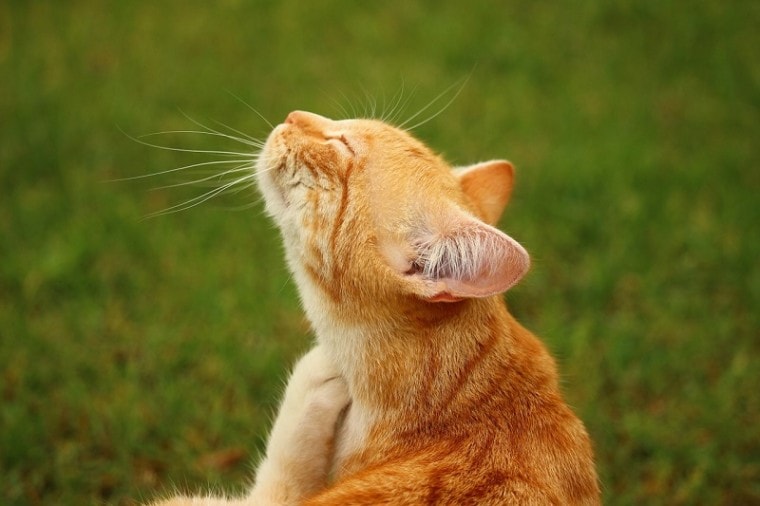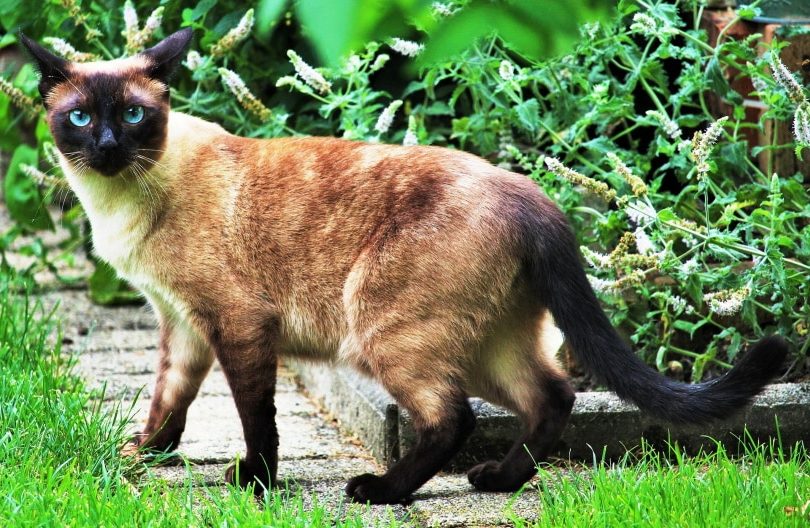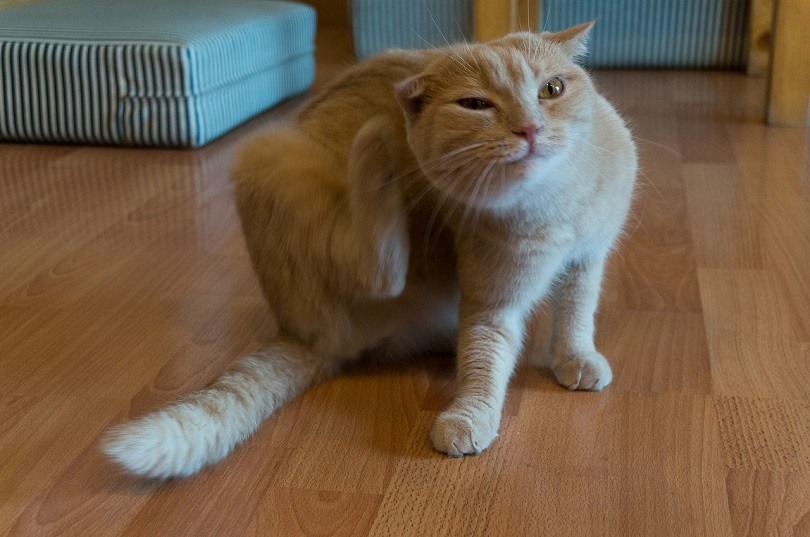
Dandruff is itchy, flaking of the skin that is unpleasant and potentially an indicator of some imbalance in your kitty’s life. Dandruff can range from mild flakes shedding during brushing to red, sore patches on your cat’s skin. Most cases of cat dandruff are simply mild, but it’s always better to get anything that looks bad checked out by your vet as it could lead to more serious skin problems such as seborrhea if left untreated.
It is important to note that if your cat has dandruff, it does not mean that they are unhygienic. In fact, there are so many factors that can cause dandruff, and it is so common that oftentimes you are just focused on relieving the symptoms rather than finding the cause. The methods to get rid of dandruff discussed here involve looking at your cat’s life and delving into each area to see what the cause could be and then providing a solution.
The 7 Ways To Get Rid Of Cat Dandruff
1. Water
This list essentially outlines the first three elements in existence, which are water, earth, and air. This should indicate to you that environmental factors are what primarily cause your kitty’s dandruff issue. If any of these are polluted, impure, or not available in sufficient quantities, your cat may develop dandruff. The stress-induced by lack of water, food, or fresh air may be the real reason that your cat has dandruff and when you remove the stress, you will remove the itching.
Wild cats would have more access to pure water from streams and rivers and the food they eat would also contain water. Lots of water in little bowls around your house are essential. This water must be clean and chemical-free and make sure that you change it daily, and even more frequently in the summer.
If you only feed your cat dry food or cat nuts, then they may be severely dehydrated, and this is presenting itself in their skin condition. Introduce some broths and more meat and fish, but it may be trial and error as taste buds differ like cats.

2. Food
There are so many cat food products out there, it can be mind-boggling when you go to the pet store. Although some of you may be on a budget, buying cheap cat food will only cost you more down the line as it may cause health issues. First, cats are obligate carnivores, which means they need almost no carbohydrates and just pure protein and fats. The ideal diet is a mixture of meats, fish, and high-quality wet food with some dry food thrown in too (depending on health, age, etc. of your kitty). If you can manage it, talk to your vet about introducing a raw diet for your cat and/or foods with no additives and preservatives, as these can damage your cat’s coat and skin. Fish oils, with omega-3 fats, are an absolute must and if you feed your kitty tuna or sardines a few times a week, it can improve their dandruff woes.
3. Air
Cats love being outdoors. Keeping a cat indoors is fine if you live in an apartment or a place where it is not safe to let your cat out. If this is the case, then it may be a good idea to get a cat harness and take your cat somewhere quiet to walk. It may seem like only dogs go for walks, but cat owners are realizing that if you want to (or must) take your kitty for a stroll, it’s beneficial for all!
Several other problems influence air quality including smoking, bad home air quality, humidity, and chemical home cleaning products. The solution to all of these is to either limit their respective amounts, stop using them altogether, or open windows and doors as much as possible. Your cat will thank you for it.

4. Massage
Grooming, brushing, or massage is essential all the same as they improve your cats’ blood circulation. This has the effect of enhancing the quality of their skin and fur and should help with dandruff. If your cat is unwell, in the final weeks of pregnancy, or overweight, then try to brush her a few times during the week. Otherwise, depending on whether your cat enjoys being massaged, weekly sessions should be enough.
5. Pests
This is the one cause of dandruff in the list that is solved only by a trip to the vets. If your feline has fleas, ticks or any other pests invading them, this could cause irritation and flakiness. There are even some mites, Cheyletiella mites, that cause a similar effect on the skin as dandruff so you can never be too careful. Take close inspection of your cat, to begin with, but if you suspect that there are some unwelcome visitors, then the pet doctor is the only one that can sort them out!

6. Bathing
Cats, in general, do not like to be washed or bathed, so this is either a last resort if all the other possibilities have not worked, or your vet has prescribed a special shampoo to help with the skin condition. Bathing your cat can be a difficult procedure, so be sure to the correct way to do it and don’t make a habit out of it.
7. Medicinal Aids
Finally, if you need to take direct action on the skin reaction itself, you can try natural, chemical-free solutions first before turning to a stronger medication.
Coconut oil is the first port of call when you see your kitty scratching. It must be organic, ethically sourced, cold-pressed coconut oil and it is naturally anti-fungal so should soothe the infected areas.
Colloidal silver is another similar remedy that is antimicrobial and antifungal and can be found in a spray or cream.
If neither of these work, speak to a vet for advice on what topical or oral treatment could heal your kitty of their itch.
See also:
- 8 Home Remedies to Get Rid of Cat Dandruff: What You Need To Know!
- 11 Best Cat Water Bowls – Reviews & Top Picks
Featured Image Credit: rihaij, Pixabay






